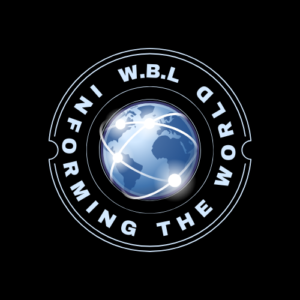In our tech-driven world, the value of human connection can’t be overstated. While mastering technical skills is essential, students must also develop soft skills like communication, collaboration and critical thinking to thrive beyond the classroom. But as pressures to deliver future-focused curricula grow, how can educators ensure that students build these important life skills alongside their technical expertise?
To explore the role of soft skills in student success and how they can be nurtured in schools, EdSurge sat down with Patrick Keeney, Senior Director of Product Management and Partnerships for Career and Technical Education (CTE) at McGraw Hill School. As the workforce continues to shift, Keeney argues, equipping students with soft skills that can adapt to any career path is more important than ever.
EdSurge: How do you define soft skills? Are there established standards for soft skills in education?
Keeney: People take pride in their technical skills and like to showcase them as competitive differentiators in our careers. In contrast, soft skills are not specialized; they are the everyday skills we need to be successful and contribute to our communities, such as communication, problem-solving, collaboration and empathy — all important.
We see soft skills mentioned in national and state standards related to career education, as well as in typical school district policies. For instance, students are expected to show up on time and behave appropriately — these are soft skills.
While soft skills are addressed on a cursory level, they’re not emphasized as critically important for students’ future roles and identities, especially compared to technical skills. Social and emotional learning, a near cousin to soft skills, is critical but not necessarily career-related. The two skill sets intersect but aren’t identical.
As a result, there’s a significant gap between students’ soft skill attainment as they leave high school and what’s needed to be successful in the workforce and as happy contributors to society.
Why is Career and Technical Education particularly well-suited for developing soft skills?
In the United States, addressing socioeconomic challenges is critical, and one of the most valuable solutions is ensuring that every high school graduate has a sense of their next step, whether it’s college, the workforce or military service. Millions of medium and high-paying jobs go unfilled due to a lack of properly skilled workers, while people living in poverty could potentially fill these roles. The increased emphasis on and funding for career education to address these challenges is perhaps the most important academic movement we can undertake.
Career education is a place where soft skills are practically important. Being punctual in a career setting is crucial, as is how you present yourself. Students are generally unfamiliar with the concept of personal branding, and their online presence can be inconsistent with their future goals. These skills are not inherently known but can be taught, practiced and mastered.
What are some effective strategies for integrating soft skills into curriculum and instruction?
If we begin with the end in mind and envision what our students should look like as high school students, college graduates or in their third year of a professional job right out of high school, we can imagine how the curriculum would need to change. Our focus groups with teachers have shown that having a separate soft skills class isn’t the answer. Instead, we approach soft skills in CTE by infusing practice into daily, weekly and monthly student activities. For example, our middle school program Career Explorations has embedded real-world, industry-specific soft skill exercises, including applied math, graphics literacy and reading comprehension.
Career Technical Student Organizations (CTSOs) like FFA, NTHS, HOSA, SkillsUSA and DECA involve hundreds of thousands of students annually. Their national conferences and competitions, such as the SkillsUSA event in Atlanta with 10,000 students competing in about 100 different areas, provide tangible examples of what students with well-developed soft skills look like. These events repeat several times a year across different organizations. These organizations and the students who benefit from them can serve as models for what we aim to achieve if we keep the end goal in mind.
How does project-based learning support the development of soft skills?
Project-based learning (PBL) inherently infuses soft skills into its DNA and can be an effective methodology for teachers and students in any classroom, not just career education. PBL can be seen as projects tied to learning or as a method where students solve real-world problems. In both cases, students must use soft skills like communication, collaboration and presentation. Not every student will excel in every soft skill, which is where collaboration becomes crucial.
Compared to isolated multiple-choice tests, project-based learning offers authentic opportunities that mirror real-life experiences. It addresses the common student question “Where will I ever use this?” by demonstrating practical applications of knowledge.
What resources and support do teachers need to effectively incorporate soft skills instruction into their classrooms?
In the case of project-based learning, providing teachers with rubrics that assess not just the project outcome but also the quality of student interactions during the project is a small but important tweak. In addition, building a curriculum that includes significant reflection and feedback is crucial, as this is fertile ground for developing soft skills. Providing role models, examples and simulations can support this process.
Assessment could take various forms, including [evaluations in] project-based learning, simulations and scenario-based tests. At McGraw Hill, team members are dedicated to incorporating soft skills activities into our career education courses and providing CTE educators — who often have unique and varied backgrounds — with robust support materials. For example, the digital teaching guide for Career Explorations features presentation materials, discussion prompts, pre-made assessments, question banks and project-based learning resources for teachers to deliver the content in a pedagogically sound manner.
As curriculum providers, we have more work to do to support teachers with soft skills. In an ideal world, there would be a technological environment with a hierarchy of standards reflecting skills. Someday, I hope to see a system that helps all teachers, everywhere, measure and track student growth in these areas and respond to that data with appropriate supports.


